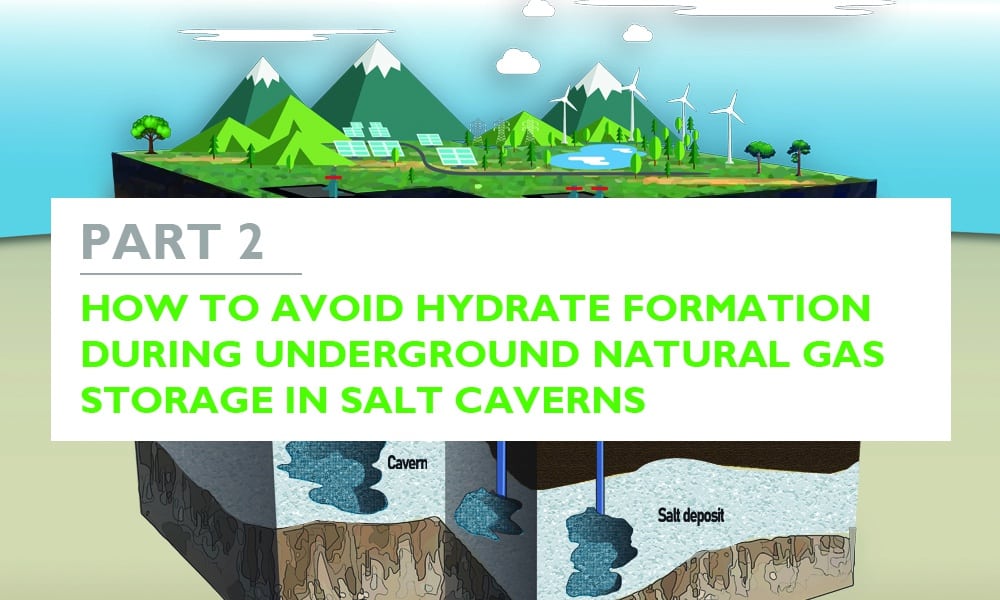
What are the main issues in obtaining a representative sample in NG applications?
In this article, I present the major issues associated with obtaining a representative sample in NG applications. The article explains what is representative sampling, and why sampling is important in the natural gas industry. I discuss factors that determine what should be a suitable sampling frequency in a process, and which sampling standards can be followed to ensure representative sampling.
Several major issues in obtaining a representative sample, and common design flaws that lead to poor sampling are presented and discussed. In addition, I present how a suitable probe length can be determined and how the probe should be installed. The different types of commonly used sampling probes are also compared and discussed.
What is a representative sampling?
A sampling process allows one to draw conclusions about the overall system using a small subset. To do this, however, the sample must be representative of the overall system. This is the case if the sample exactly reflects the characteristics of the overall system.
In the chemical industry, sampling helps plant operators manage product quality & improve efficiency. The sampling can help reduce waste, and ensure compliance with the process parameters and regulations.
Sampling frequency
The frequency with which you should take samples depends on the expected fluctuations in the composition of the process stream. Depending on the process, the fluctuations may be hourly, daily, monthly, or seasonal.
Facilities and gathering systems that are composed of combined gas streams must be sampled more frequently. This is because NG comes from several wells with different quality, quantity and composition.
Based on this, I recommend that you take and analyze samples as often as necessary. This way, you can ensure that all essential fluctuations are recorded within a specific period of time.
Why natural gas sampling should be undertaken?
Raw natural gas is a mixture of methane, various hydrocarbons, nitrogen, along with some other inert compounds.
The heating value of the gas can vary depending on the composition of the mixture. Components like, nitrogen, carbon dioxide and inert compounds have no heating value. But the heating value of hydrocarbon components depends on their molecular structure. The overall heating value can, therefore, only be determined through an accurate analysis of the gas composition.
You can use compositional analysis to determine the extent of recoverable liquids in the mixture. Application to identify contaminants is also possible.
In the oil and gas sector, allocation refers to an ongoing process. It is based on flow or volume measurements, that determines the distribution of contributing sources.
Sampling is used for the analysis of various gas streams flowing into a gathering system. Different streams can be classified as lean/rich or sweet/sour after a representative sample analysis.
Each type of gas has a different economic value depending on its composition. In order to fairly compensate the stakeholders, it is important to correctly measure the volume and quality of gas from each source.
What are the sampling standards for the NG industry?
The development of sampling standards for the NG industry is based on the results of rigorous field testing. This is supplemented by recommendations from stakeholders based on decades of practical experience.
These standards provide details of potential causes of sample distortion. They describe recommended sampling equipment, and specify sampling techniques to obtain representative samples. The two most-cited industry standards are:
API 14.1: This standard is developed by the American Petroleum Institute (API). The standard is published in the Manual of Petroleum Measurement Standards. Chapter 14 of this manual, titled Natural Gas Fluids Measurement, specifies the standards for Collecting and Handling of Natural, Gas Samples for Custody Transfer.
GPA 2166: This standard has been developed by the Gas Processors Association (GPA) and specifies techniques and procedures for Obtaining Natural Gas Samples for Analysis by Gas Chromatography.
What are the main issues in obtaining a representative sample in NG applications?
In the natural gas industry, representative sampling can be described as the sampling of a limited volume of gas. The volume sampled is representative of the process medium actively flowing through the system.
The sampling system must be designed so that a representative sample can be taken each time. And this is where the challenge lies. Using an inappropriate technique for sampling or poor design of the sampling system can lead to errors in the measurement of key parameters.
I have summarized for you the most common issues that lead to incorrect sampling in NG applications:
#1 Sampling conditions don´t correspond to the production condition
The design of a representative sampling system must take into consideration the nature of the application and the process conditions under which the sample must be collected.
The piping and instrumentation diagram (P&ID) of a process generally identifies the sampling points within the process. As well as the required process conditions. These can include operating temperature and pressure, product flow rate, product viscosity, and the size of the lines. In order to ensure process safety during sample collection, these operating conditions must all be factored in.
Significant temperature and pressure variations may lead to a material phase change causing measurement errors. To avoid such issues, sampling must be conducted as close to the production process point as possible.
#2 No significant pressure differential between the inlet and outlet
A sampling system is usually connected to the main process via a return line. In this way, any uncollected sample can be returned.
With such installations, the gas sampling lines to and from the main process must be purged. This ensures that residual substances in the lines do not influence the test results.
A basic design flaw is to tie in the sampling system return line too close to the sampling supply inlet.
If there is no significant pressure differential between the inlet and the outlet, there will be effectively no flow through the sampling system.
A good design should incorporate what is known as a “speed loop” or a “fast loop”. The pressure at the inlet should be higher than at the outlet, creating a continuous flow through the sampling system. A fast loop should typically have a pressure differential of 5-15 psig between the inlet and the outlet.
#3 The sampling location don`t consider the nearby turbulence factors
When choosing a location for the sampler, you should consider the turbulence factors in the nearby area.
Flow restricting devices can create swirls or re-circulation eddies. These may have a composition that is significantly different from the flowing stream.
The recommended mounting location is at least five pipe diameters downstream from elbows, fittings, valves, or any other restricting devices.
#4 Probe length doesn`t comply with standards
The API standard recommends that the sample probe tip extend into the center third of the flowing stream. By keeping the tip away from the pipe walls, you avoid drawing in migrating hydrocarbon fluids.
On the other hand, probes that are too long can mechanically fail due to vibration. The GPA standard specifies that probes must not be inserted more than 25 cm into the pipe to avoid vibrations. API 14.1 section 7.4.1 also contains recommendations regarding probe length.
#5 Not enough time for flushing of isolation valves
Installation of isolation valves at the inlet and outlet of the sampling loop can also lead to errors during sampling. This happens when they are normally kept closed and opened only for sampling.
If there is not enough time to flush the stagnant material in the loop, this can also result in an unrepresentative sample.
Each process presents its own sampling challenges. It is advisable that design teams work with an expert in sampling systems who knows how to avoid potential pitfalls.
#6 The sample probe isn`t installed correctly
Gas sampling probes provide an important interface between the process and the analysis system. The probe extracts the sample gas from the process stream and supplies it to the collection system. As an operator, you must ensure that the collection system has a properly installed sample probe. A well-designed sample probe has a shorter response time and eliminates dead volumes.
Sample probes are available with direct mounted single flow, dual flow, or insertable/retractable options. The two most commonly used gas sampling probes are single flow and dual flow.
#7 Single flow sample probes
A single flow sample probe is generally constructed from a piece of 316SS straight tubing connected to a ½” to 1” bushing or valve. And it is the simplest sample probe design with a straight cut or beveled tip.
Most single flow probe designs provide for a hot loop connection to a downstream point. The differential pressure between the two points drives the flow through the sampler.
#8 Dual flow sample probes
The dual flow probe eliminates the need for a downstream pressure drop.
It uses the differential pressure between the probe tip and the return port at the bottom of the probe connection to create a slipstream loop. The loop provides a flowing stream of gas from the pipeline to the sample system.
Dual flow probes are commonly used when the sampler is remote mounted, but they also work with direct mount systems. When mounted remotely, the distance between the sample pump and the probe connection should be minimized.
Conclusion
Proper sampling techniques are necessary in the NG industry to check the quality and heating value of natural gas. Representative gas sampling techniques must be employed for reliable, accurate, and repeatable gas analysis results. The API and GPA standards provide recommendations and guidelines for safe and representative sampling.
When setting up a sampling system, it is important to ensure that the sampling conditions correspond to process conditions. A continuous flow through the sampling system must be ensured and turbulent zones with recirculation eddies should be avoided during selection of sampling points. It should also be ensured that the isolation valves are flushed before a sample is drawn. The probe should extend well into the flowing stream but should not be too long to become a source of vibration.
Installing suitable sampling equipment at the correct location is critical to obtaining representative samples which can help ensure proper allocation, reduce maintenance costs, and ensure process safety.






